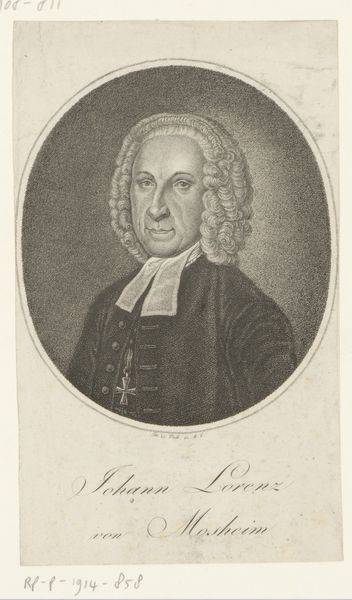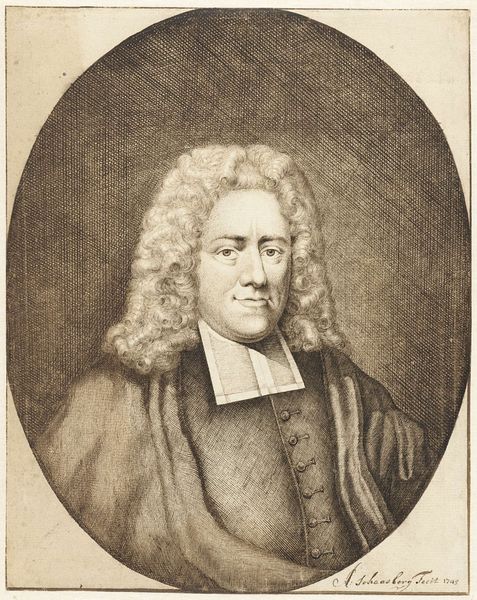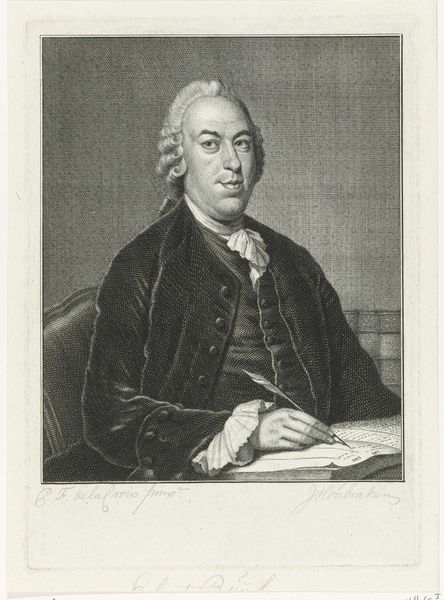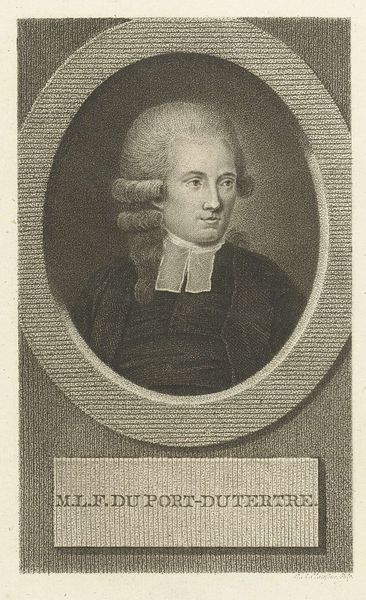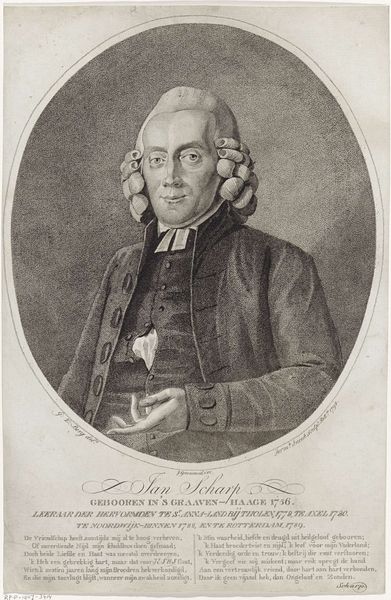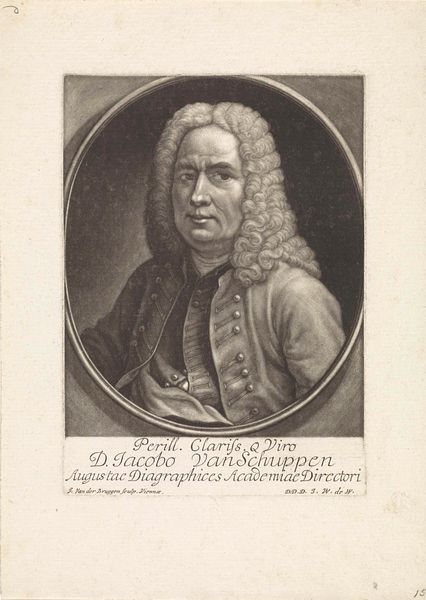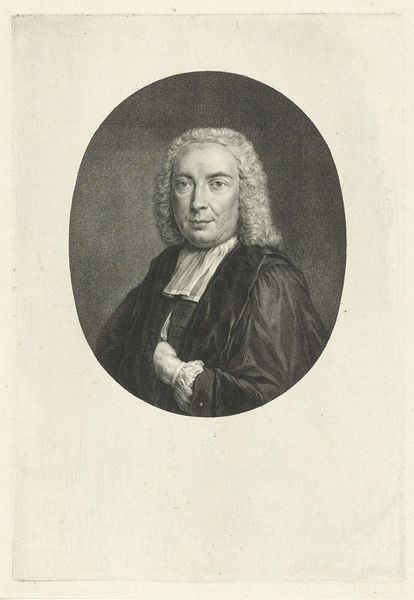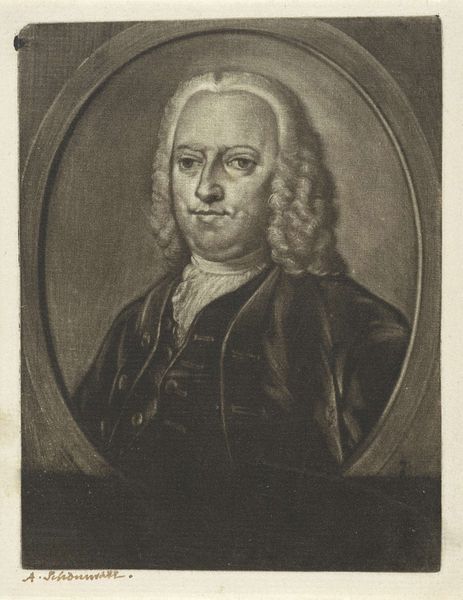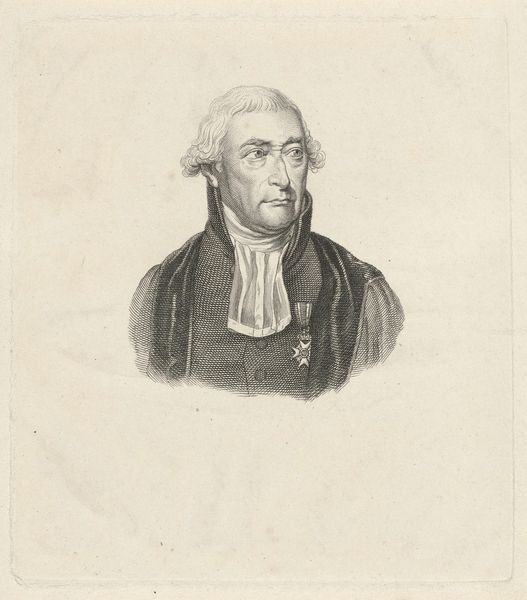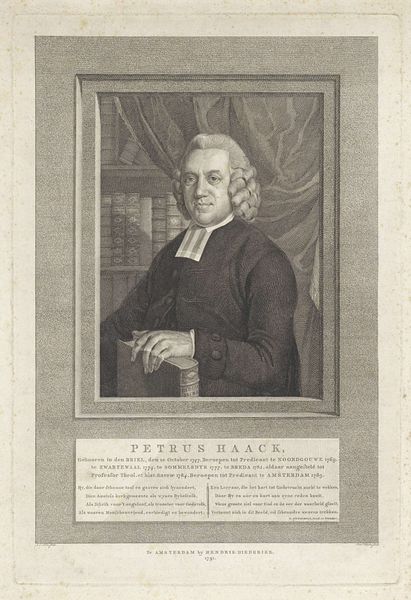
print, paper, engraving
#
portrait
#
pencil drawn
#
neoclacissism
# print
#
pencil sketch
#
old engraving style
#
paper
#
portrait reference
#
pencil drawing
#
19th century
#
portrait drawing
#
engraving
#
realism
Dimensions: height 377 mm, width 265 mm
Copyright: Rijks Museum: Open Domain
Mathias de Sallieth created this portrait of Jan Scharp using etching and engraving techniques, a common method for reproducing images in the 18th century. Sallieth captures Scharp, a preacher from Rotterdam, within the conventions of formal portraiture, reflecting the sitter’s social standing. Yet, this image exists within a specific historical and cultural context. The Dutch Republic, though a commercial power, was also a society marked by rigid class structures and religious divides. Scharp’s identity as a preacher placed him in a position of moral authority, but also within a landscape of theological debates. Notice the details: the powdered wig, the somber attire, and the oval frame, each element speaks to the visual language of status and decorum. But consider also the gaze, direct and perhaps a little unsettling. Does it invite connection, or does it hold the viewer at a distance? What feelings does it evoke? Ultimately, Sallieth’s portrait of Jan Scharp is more than just a record of a man’s likeness; it's a cultural artifact that encourages us to think about the interplay between identity, representation, and the power dynamics of 18th-century Dutch society.
Comments
No comments
Be the first to comment and join the conversation on the ultimate creative platform.
